An adventure was easy to conjure: Manto the captain of the bowrider confessed to a non-functioning GPS. Everyone wore dark glasses, cigarettes were chain-lit. An Indonesian actor who was also a secret political activist held forth on the Machiavellian machinations that led to Sukarno’s, the first president, ousting from power and the rising spell of the Contra. Cans of Bintang beer sweated lustily in the icebox under the canopied stern. The sea shimmered all around, a galaxy on earth. Somebody had sighted a dolphin and screamed at the pirouette and everyone waited with abated breath, fingers fire-ready at the shutter. The boat coasted in the middle of nowhere, silenced as if against its will. Tiny islands with towering clean-shaven, green-tinted knolls dotted the horizon.
“It must be one of those?” I asked.
Manto took a deep drag of his kretek, an onomatopoeic name given to flavoured cigarettes hugely popular in Indonesia. This was clove, the flavour most commonly available, and one could actually hear the spice crackling as it transformed into brittle ash. He made an act of peering close through the windshield, as if labouring hard not to let the Singaporean sunning herself sprawled across the other windshield malign his field of vision. And quite ponderously shook his head. How do you even know, your GPS is…
“I know,” he said eerily reading my mind and tapped his head. “This is my GPS.”
We docked at a long pier made like a suburban street with striped kerb and solar powered street lamps. Inevitably the chatter shifted to Komodo – after all we were now right in its backyard. I mentioned a friend who wanted an exclusive photograph – one I wouldn’t issue over any social media outlet. A better informed middle-aged Indian blogger spoke about the ‘third eye’ of the Komodo, ‘something like our Shiva’ she said daubing the information with more than a mere smear of pride. The ‘third eye’ I found later is correctly and boringly called the parietal or pineal eye, is not easily visible as it is camouflaged by the scales and is a photosensitive organ that distinguishes light and dark. This apparently was a survival mechanism for the maybe prelapsarian ‘bottom dwelling’ species to detect threats from the air. The Komodo dragon itself is believed to belong to a family of relict lizards from four million years ago. Its huge body size – 10 feet long and up to 130 kg once fully grown – has remained stable only on a handful of islands in Indonesia, mostly in the namesake one in Flores we were on now.
Hello Komodo
The shared stories and warnings, portrayals both imagined and instilled by the romance-keepers warranted probably a more dramatic entry. Instead there was one right next to the pier itself close to shore, just an overgrown gecko from above. Once the DSLRs had their fill the banter veered to what it was doing so removed from its assigned habitat: getting a tan, taking first-hand stock of its own popularity, or trying to get across to the picturesque Pink Island nearby which it must have heard was a haven for scuba divers and skinny dippers. Tasrif, local guide and conservationist, came to the rescue.
“It must have been hunting,” he said. “The Komodo uses camouflage extensively and exercises infinite patience often lying in wait for several hours while in pursuit of prey.” This was too much information too early, dutifully nodded at. But Tasrif turned out to be right: as we were leaving the island we saw an antelope gazing out at the sea, unmoving, from the other side of the pier where the Komodo sat. Day dreaming would be its demise. This is what it would know uselessly late in life: the Komodo dragon is an efficient hunter – can muster up to 20 km/h speed in short bursts. The squat legs are very powerful allowing it to spring, really a surprise considering its weight and otherwise sluggish demeanour, can stun a prey with a lash of its tail and eviscerate it with sharp claws and teeth. Now even if the antelope did manage to gambol away from the Komodo’s deathly jaws, it would still have just a few hours of living left before succumbing to the venomous saliva that kills or severely maims within 24 hours. The Komodo will follow it patiently for miles, a reptilian Mick Taylor, using its forked, flickering tongue to whiff out the carrion from far away.
Know your Komodo
Tasrif took us around the island largely an open grassland of low elevation – natural habitat of the Komodo dragon. Red and white signboards told us to watch out for the famous island dwellers but being afternoon most were resting indoors. We passed by ridges next to cleared open areas with dark, deep burrows: these were Komodo residences between one and three metres deep, dug by the dragons themselves using their strong claws and forelimbs. These were also ambush points for passing prey. A disconcerting piece of information considering most of us were peering intently at fallen logs for signs of movement. What were the chances that there would one sole hungry dragon? It was slim as I came to find later – most of the Komodo dragons were fed sumptuous noisettes at regular intervals. How about the upright one which believed in earning its dinner? Or Oliver which just didn’t get enough? An adult dragon can consume up to 80 per cent of its own body weight in a single sitting.
The highlight of the walk was the realisation how lucky the Komodo dragon was to be inhabiting such a pretty island. And then: maybe its still pretty because of them. We passed by several places which looked like pages out of coffee-table books. Tasrif while adumbrating over the science and physiology part of the Komodo was eloquent about the fabled narrative of its beginning. A story that revolved around twin brothers – one man, one dragon. I missed out on this one as I fell in with another group whose guide was telling them something more, well, pertinent.
“If chased by a Komodo dragon, run in a zigzag fashion,” he said. “Or clamber up a tree.”
I could neither – just before taking off for the trip the swelling around my left ankle was detected to be a possible case of gout. I just hoped the dragons were all well-fed that day.
Eating with the dragon
Our lunch was served at an elevated open hall with some senescent dragons lying around quietly relishing all the attention piled on them by the tourists. Everyone, including me, wanted that one, never-seen-before photograph of the Komodo. It transpired soon enough that they would be of the Komodo trying to snap you up. You inch close for that last leaf shot and the guides come brandishing their staffs and berate you with fatal statistics: 22 attacks recorded so far including six deaths, the last one in 1974 of Swiss national Baron Rudolf. The dragon spared his sunglasses and camera though.
Soon we all got used to being surrounded by dragons and repaired to our lunch tables only to rush back out when one began waddling up to a widdle pool. Its tongue kept forking out intermittently as it scrounged the soupy water. It soon lost interest in hydrating itself and held us all in an unblinking gaze. Then it turned around and walked the entire length of the hall on stilts, its tongue blinking, probably all the food, before settling down to watch the next group and their gaga antics.
Late afternoon was spent on the Pink Island, 15 min away, diving, trekking and negotiating prices of coral necklaces with locals. Back on the boat as an inky dusk fell, Manto nodded at his lascar in training who rummaged through a cardboard box and brought out a flashlight. The nimble lad sprinted across the slippery gunwale before plonking himself by the bow. He then shone a fading yellow beam through the drippy dark; the boat’s headlamps weren’t working.
The adventure continued.


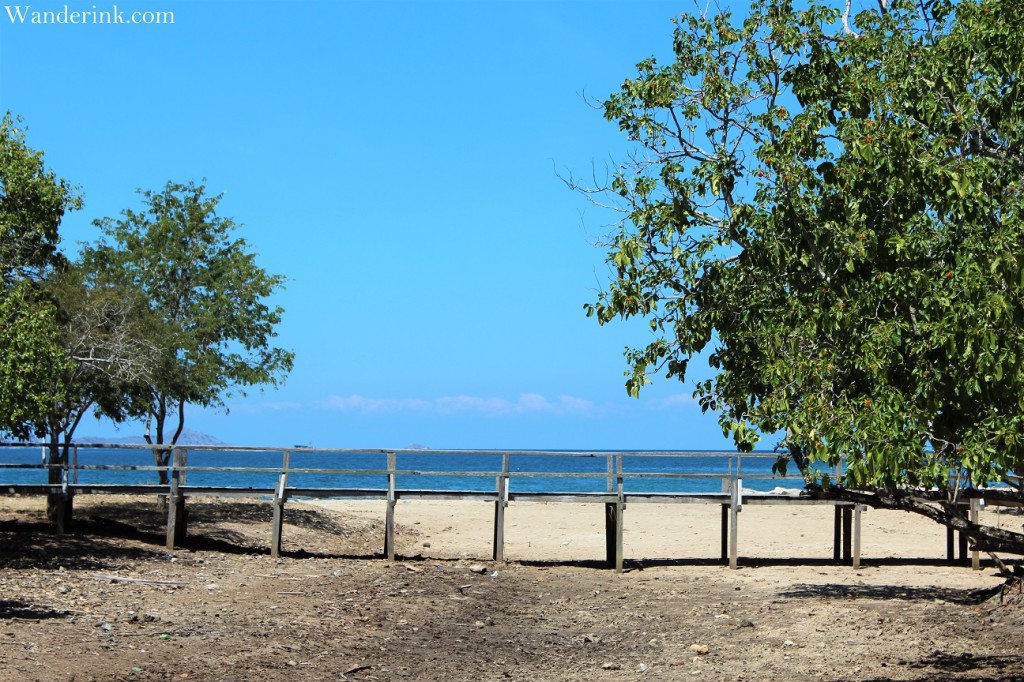
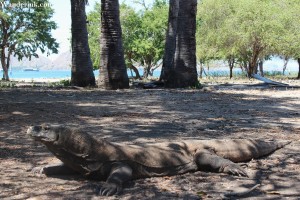
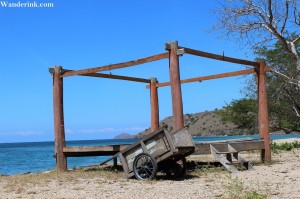
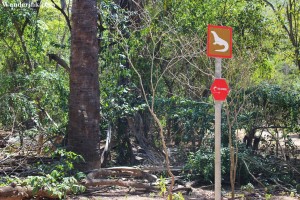

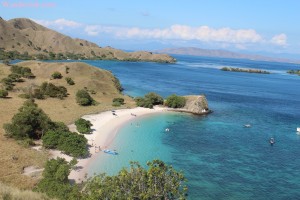









Wow this is very different post. Quite an adventure
Adventure, sort of :)). Thanks Rakhi.
Clearly an enthralling experience, with a narrative to match. Could almost hear the tread-crunch on fallen leaves…
You mean you watched the video on Youtube? 🙂 Thank you, as ever.